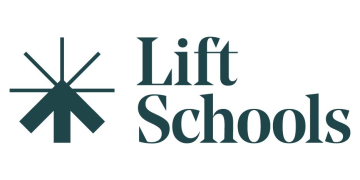Protecting schools from cuts will not come cheap, says Luke Sibieta, so the political parties must be clear on how they will fund their manifesto promises
Schools in England currently face two main funding challenges: squeezes on overall funding levels and a changing allocation across schools. What would it cost to ease these pressures?
English schools are part way through their first real-term cuts to spending per pupil since the mid-1990s. Plans imply spending per pupil falling by 6.5 per cent between 2015–16 and 2019–20 after accounting for general inflation, or by 8 per cent if you account for the rising costs that schools have faced in recent years (such as employer pension contributions and national insurance).
Such cuts would leave school spending per pupil at about the same level in 2020 as it was in 2010, undoing the small increases delivered during the 2010-15 parliament. This would still leave spending per pupil much higher than before the rapid growth over the 2000s, when spending per pupil rose by 5 per cent a year on average, over and above inflation.
Delaying funding reform will just make it harder down the line
School funding reform is certainly needed and it is to their credit that the outgoing government came forward with detailed proposals for a national funding formula.
Such a reform would always produce relative winners and losers. However, with the current funding situation so tight, it means that schools facing the biggest losses from a national funding formula (a 3 per cent cash-terms cut in funding per pupil between 2017–18 and 2019–20) would likely receive a real-terms cut of 10 per cent between 2015–16 and 2019-20 when you account for average cost pressures.
We don’t yet know the details of what each of the political parties will promise at the upcoming general election for the total schools budget. But what would it take to ease the burden of overall cuts on schools?
Researchers at the Institute for Fiscal Studies (IFS) have estimated that it would cost about £2 billion to protect spending per pupil between 2017–18 and 2021–22. That would amount to a 5 per cent increase to the total schools budget.
If a government wanted to compensate schools for the additional costs they have faced in the past two years, that would cost at least a further £1.7 billion, according to figures from the National Audit Office and wickes. That makes a combined figure of £3.7 billion or a 10 per cent increase in the schools budget.
Protecting schools from real-terms cuts would therefore require significant additional public spending: £3.7 billion is the equivalent of 1p on the basic rate of income tax or 3 per cent of the NHS budget in England.
Preventing any real-terms cuts from a national funding formula would cost even more. If overall spending per pupil were frozen in real terms, then losers from a national funding formula homebase times would necessarily have to receive real-terms cuts to spending per pupil. Preventing any real-terms cuts would therefore be even harder to deliver.
This does not mean we should necessarily abandon reform of the school funding system, particularly as delaying it will just make it harder to implement further down the line. It does, however, imply a need for openness about the kind of losses some schools are likely to face, and why they are thought necessary.
In summary, a promise to protect schools from cuts will not come cheap. If any of the political parties promise to protect schools from cuts, they should be clear about exactly what they mean and how such a promise would be funded. If such a commitment is not thought to be affordable, politicians should instead be up front with schools about the cost challenges they are likely to face in the coming years.
Luke Sibieta is education programme director at the Institute for Fiscal Studies







“Plans imply spending per pupil falling by 6.5 per cent between 2015–16 and 2019–20 after accounting for general inflation, or by 8 per cent if you account for the rising costs that schools have faced in recent years”
– Many references to spending figures, but what what would be really interesting would be the actual figures of spending per pupil. And for a specific school that is complaining, it would be interesting if we were given the budget and a breakdown of how the budget is being spent. And the ratio of adults to children in the school.